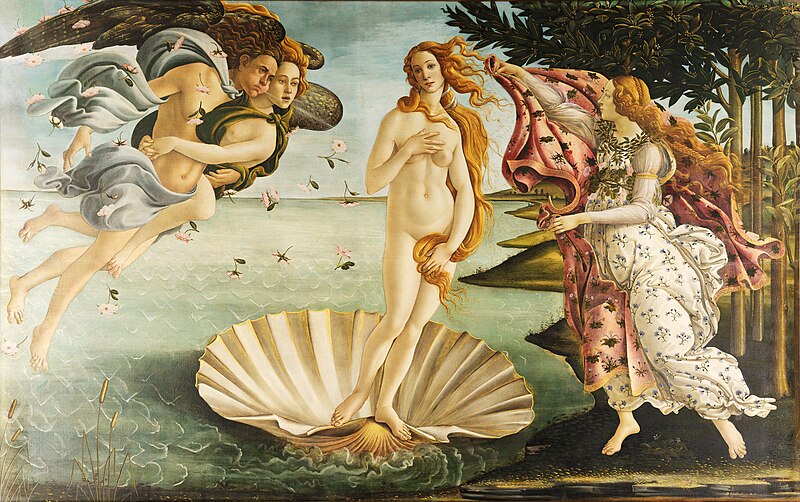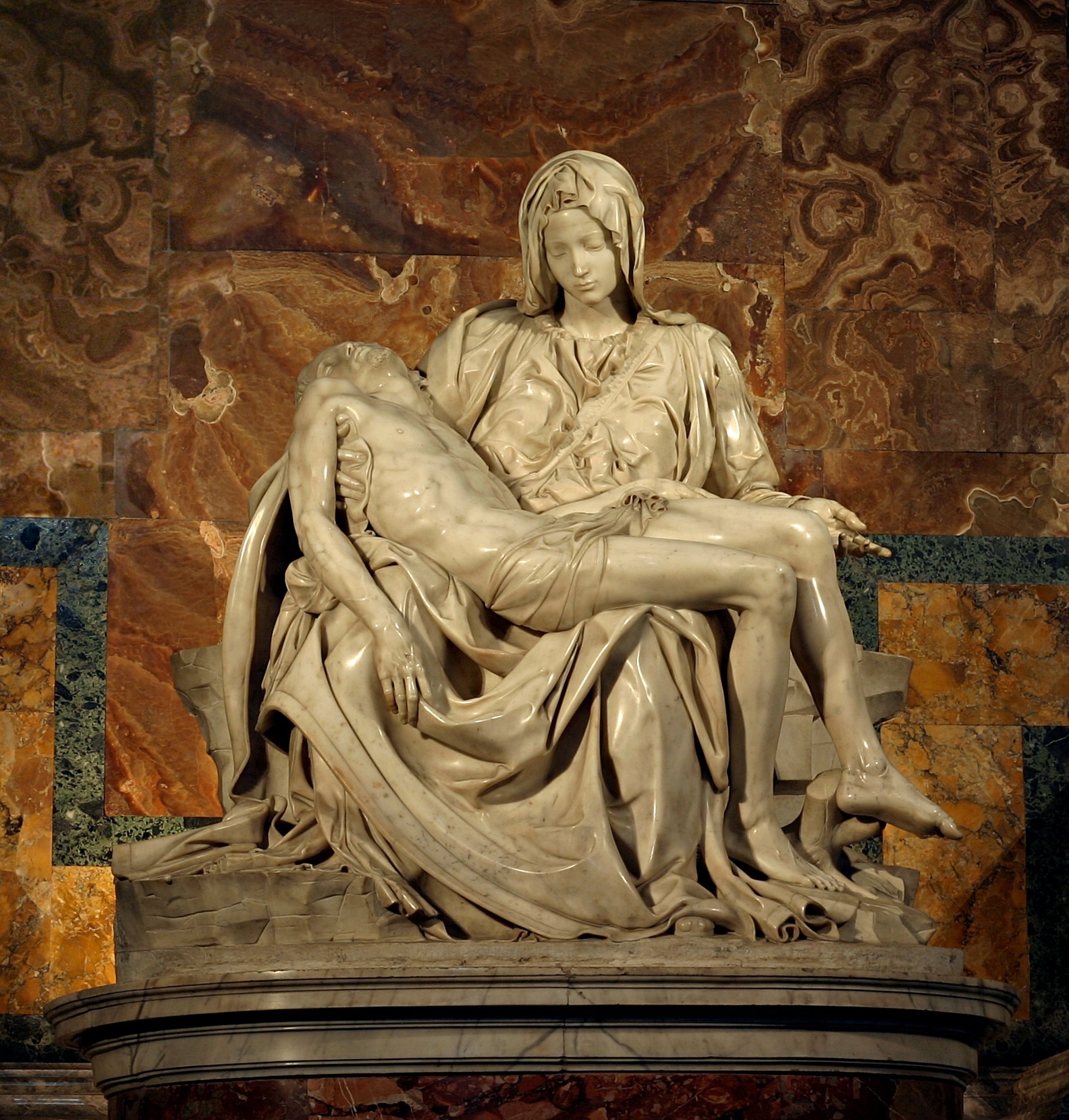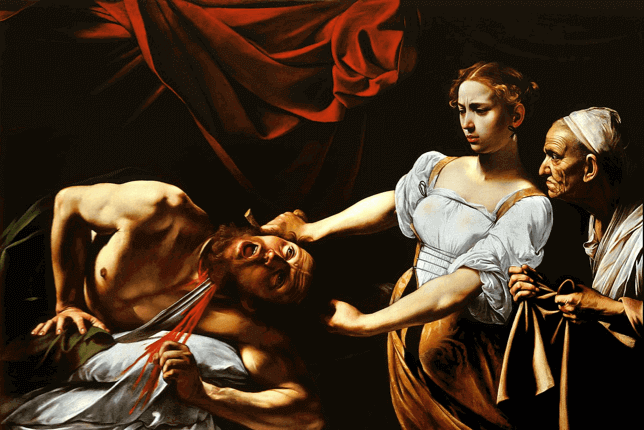The Forefathers of Art in the Italian Renaissance
Donatello's pioneering realist sculptures, Michelangelo's divine sculptures and frescoes, Caravaggio's dramatic use of light and shadow in painting, and Botticelli's exquisite narrative works, such as "The Birth of Venus," collectively capture the spirit of Renaissance innovation and brilliance. Tourists, art enthusiasts, and art historians travel great distances to view these masterworks firsthand and to walk the halls that these great masters once did. This journey transcends mere admiration; it is an exploration into the core of Renaissance creativity, where the fusion of humanist ideals and artistic expression continues to evoke profound awe and admiration.
In this article we will talk about the lives and legacies of three monumental figures who defined the zenith of Italian art: Michelangelo, Donatello, and Caravaggio and Botticelli. Each of these masters brought forth a distinct vision that transcended their time, leaving an indelible mark on the canvas of art history!
The Beginning of the Artistic Revolution
The transition from the Middle Ages to the 14th century heralded a significant transformation in European culture, signaling the dawn of the Renaissance. This period marked a departure from the predominantly religious focus of society towards a revival of interest in the humanistic values of Greek and Roman civilizations. This shift was evident in various fields, including science, technology, philosophy, literature, and especially the arts. In Italy, the influential House of Medici played a crucial role in fostering this cultural rebirth through their political and financial support. As the scenic epicenter of the Renaissance, Italy became the nurturing ground for some of the most revered painters in art history.
The Italian Renaissance, spanning the 14th to the 17th centuries, introduced the world to art history's most celebrated figures. The era's painters, including luminaries like Michelangelo, Botticelli, Raphael, Donatello, and Caravaggio, pioneered techniques that forever changed the portrayal of human figures and landscapes, achieving an unprecedented level of naturalism.
Renaissance art represented a significant evolution from the flat, divine-centric depictions common in the Middle Ages. Artists began to draw inspiration from the world around them, incorporating advances in human anatomy understanding and employing linear perspective. This technique, borrowed from architecture, allowed them to depict space and proportion with remarkable accuracy, securing their place in the annals of art history.
Come study the works and lives of the great geniuses of the Italian Renaissance, whose inventive contributions have permanently altered Western art!
Donatello (1386-1466)

Donatello "David"
Donato di Niccolò di Betto Bardi, known as Donatello, was born in Florence around 1386. He entered the art field at a young age, demonstrating promise in workmanship and artistry that would later define his career. By his late teens, Donatello was already involved in significant artistic projects, notably working with Lorenzo Ghiberti on the bronze doors of the Florence Baptistery, a collaboration that marked the beginning of his professional journey in the early 15th century. Donatello's work spanned various forms, but he is most celebrated for his innovations in sculpture. One of his earliest masterpieces, the marble "David" (1408-1409), created for the Florence Cathedral, showcased his mastery of form and established his reputation. However, it was his later work, the bronze "David" (circa 1440s), that truly revolutionized Renaissance sculpture with its unprecedented expression of naturalism and its use as a political symbol for the Florentine Republic. Among his notable projects was the work on the Cantoria (singing gallery) for the Florence Cathedral, demonstrating his skill in relief sculpture.
Donatello did not venture into painting or fresco; his legacy lies in his sculptures, which were groundbreaking for their realism, emotional depth, and technical innovation. Through these works, Donatello significantly influenced the Renaissance art movement, leaving a legacy that continues to be celebrated for its profound impact on the development of Western art.
Botticelli (1445-1510)

Botticelli "The Birth Of Venus"
Sandro Botticelli, born Alessandro di Mariano di Vanni Filipepi in Florence in 1445, began his artistic training at an early age, likely around his teenage years, under the tutelage of Fra Filippo Lippi. Lippi's influence on Botticelli's development as an artist was profound, instilling in him a delicate precision in line and a keen sense of composition that would define his work.
Botticelli's career was marked by his contributions to some of the most significant art projects of the Renaissance. Notably, he was one of the artists chosen to decorate the walls of the Sistine Chapel in Vatican City, contributing frescoes that remain pivotal examples of Renaissance artistry. "The Birth of Venus" and "Primavera" stand as his most celebrated works, revered for their beauty, intricate detail, and symbolic complexity. In his later years, Botticelli came under the influence of the fiery preacher Girolamo Savonarola, who led a reform movement in Florence. It is said that Botticelli's work became more somber during this period, and he may have even destroyed some of his earlier paintings due to Savonarola's denouncement of secular art.
Michelangelo (1475-1564)

Michelangelo "Pietà"
Michelangelo Buonarroti, born in 1475 in Caprese, Italy, stands as one of the towering figures of the Renaissance, celebrated for his mastery across multiple art forms. Michelangelo began showing an interest in art at a very young age and started his formal training in the arts around the age of 13. He was apprenticed to the painter Domenico Ghirlandaio in Florence, where he was exposed to the technique of fresco painting and the Florentine art scene, marking the beginning of his journey as an artist. This early start laid the foundation for his future masterpieces and his monumental impact on the Renaissance art world. Michelangelo's genius is profoundly evident in his sculptures, notably the "Pietà" and "David." The "Pietà," housed in St. Peter's Basilica, Vatican City, showcases his unparalleled ability to depict the human form with both precision and emotional depth, presenting the Virgin Mary cradling the dead body of Jesus. "David," standing in the Galleria dell'Accademia in Florence, is perhaps the epitome of Renaissance sculpture, capturing the beauty and vigour of the human body in the moment before battle with Goliath.
Michelangelo's contributions were not limited to sculpture. He worked on grand projects that have left an indelible mark on art history, including the design of the Laurentian Library and the dome of St. Peter's Basilica. However, it is perhaps the Sistine Chapel ceiling, painted between 1508 and 1512, that remains his most celebrated painting. This monumental work, featuring scenes from Genesis and the iconic "Creation of Adam," demonstrates his mastery of form and his innovative use of perspective and anatomy.
Caravaggio (1571- 1610)

Caravaggio "Judith Beheading Holofernes" 1598-1599
Michelangelo Merisi da Caravaggio, born in 1571 in Milan, Italy, began his artistic journey in his early teens, apprenticing with the painter Simone Peterzano in Milan. This early start laid the groundwork for a career that would revolutionize the world of art with dramatic lighting and realistic depictions of human figures. Caravaggio moved to Rome in his early 20s, where he initially worked on various projects, painting still lifes and scenes with figures for patrons. His breakthrough came with the commission of the "Contarelli Chapel" in San Luigi dei Francesi, where he painted three scenes from the life of Saint Matthew, showcasing his dramatic use of chiaroscuro and deep psychological insight. Some of his most famous works include "The Calling of Saint Matthew," "Judith Beheading Holofernes," and "The Supper at Emmaus," each characterized by dramatic lighting, intense emotional realism, and innovative compositions that broke away from the idealized depictions of the time.
Despite his troubled life, Caravaggio's influence on Baroque art was profound, inspiring generations of artists with his emphasis on realism, contrast, and emotional depth. He died under mysterious circumstances at the age of 38, leaving behind a legacy that forever changed the course of Western art.
Echoes of the Renaissance in Modern Artistic Practice
The Renaissance epoch profoundly influenced modern art by reintroducing classical ideals of beauty, proportion, and perspective, laying the groundwork for artistic expression that emphasizes realism, human emotion, and the natural world. It portrayed the artist as a creative genius, an ideal that stays alive today. Techniques developed during the Renaissance, such as linear perspective and chiaroscuro, remain foundational in art education and practice. The era's exploration of humanism and the individual has inspired modern movements to express contemporary life and identity.
The masterpieces of the Renaissance continue to serve as a boundless source of inspiration for countless artists!
No Comments Yet...